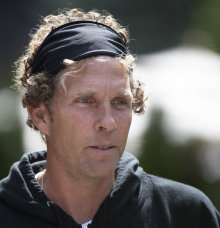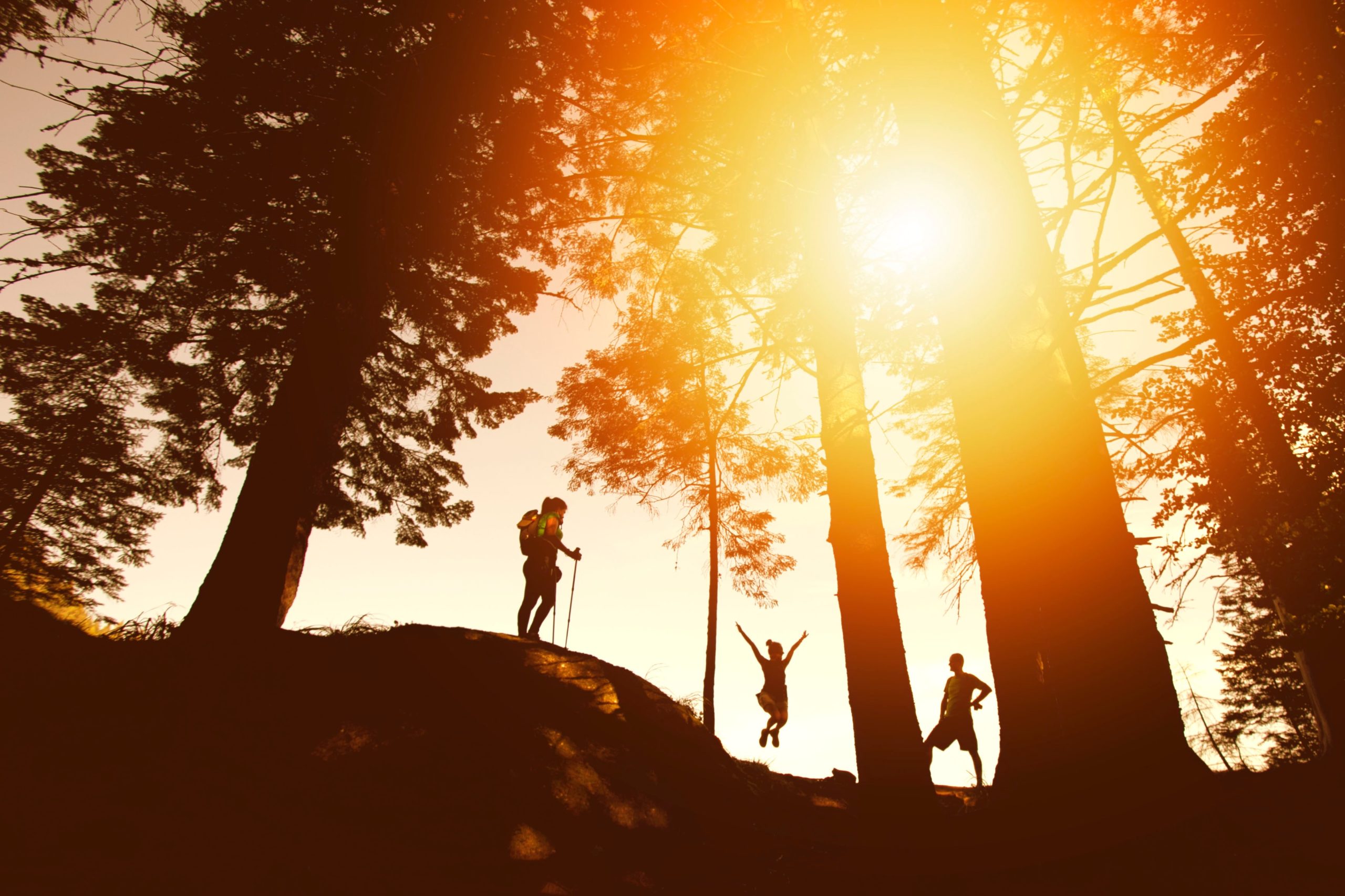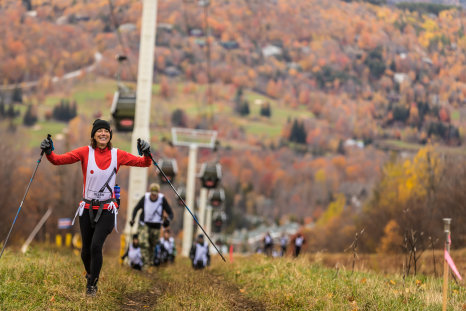‘Everesting’ takes executive endurance to new heights
Article by Anders Melin
Source: Financial Review
February 20, 2020
The sun is still below the horizon and the temperature barely above freezing when Jesse Itzler gears up to ascend a black diamond ski slope. “We’re going into the clouds!” he exclaims, eyeing the snow-covered summit of Vermont’s Stratton Mountain, which is ominously concealed by dense fog.
Never mind that Itzler, a 51-year-old serial entrepreneur and former rapper, has enough money in the bank that he never has to work another day in his life, let alone scale a mountain on a chilly October morning. He’s out here anyway, clad in blue shorts, a wind jacket, and a headband, accompanied by roughly 200 others who range from veteran endurance athletes to people for whom exercise is more of a goal than a habit. They’ve all paid about $US4000 ($5975) for the privilege of joining him.
Executives take on this endurance challenge to “sharpen their focus” and have more fulfilled lives. Supplied
The challenge: Follow a winding trail up to the summit. Catch the gondola down. Repeat 16 times. That adds up to a little more than 29,029 feet of elevation – the equivalent of Mount Everest, without the altitude sickness and oxygen tanks – spread over 37 kilometres of trekking.
Over the next 36 hours, which is the time limit to complete this “Everesting” challenge, numerous participants confess that they’ve struggled to explain to family and friends what they’ve gotten themselves into. Lengthy runs or triathlons are known quantities for those who revel in physical exhaustion. Hauling up and down a ski slope isn’t.
This recent “29029” event is the third that’s been held in Vermont. (Another hike took place in Snowbasin, Utah, a few weeks prior, and the team is adding one in Sun Valley, Idaho, in June.) The participants are fairly evenly split between men and women, and the average age is well over 40. Some have a few marathons behind them. But for most, this is a new frontier.
Itzler, meanwhile, has been an endurance runner for decades. In the weeks leading up to Vermont, the father of four completed two races – one of 160 kilometres and one where he lapped a course 17 times for a cumulative 127 kilometres. “It makes me feel super alive,” he says. “And this allows everyone to have that experience.”
By flooding the consciousness with gnawing unpleasantness, pain provides a temporary relief from the burdens of self-awareness.
Studies show that endurance sports disproportionately attract people with white-collar jobs and above-average incomes. That’s true here on the mountain. Many are entrepreneurs or corporate managers. One is an executive at Bank of New York Mellon. There’s a Goldman Sachs Group private wealth manager; a president of an executive search company; a California civil rights attorney.
Part of it comes down to costs and time: training, equipment, and travel can easily amount to several thousand dollars. (The Vermont climbers have gone through a 20-week pre-climb program overseen by Itzler’s deputies.)
But it also makes you wonder why people who work long hours to attain a comfortable lifestyle spend significant amounts attempting to get uncomfortable. The answer, at least according to a study of Tough Mudders in the Journal of Consumer Research, is simple: to escape themselves.
“By flooding the consciousness with gnawing unpleasantness, pain provides a temporary relief from the burdens of self-awareness” and helps participants “create the story of a fulfilled life”, the authors wrote.
“We live in general – obviously not everybody – cushy lives,” says Chad Livingston, 47, a first-time Everester who works at a family office in New York. “And you sort of have to manufacture immensely challenging things. I think it sharpens you.”
An unconventional entrepreneur
Born and raised in a middle-class family on Long Island, Itzler has a resume that’s anything but conventional. He started out as a rapper in the early 1990s, and that evolved into a music consulting business in which he wrote a song for the NBA that won him an Emmy.
He then co-founded Marquis Jet Holdings, a pay-by-the-hour private jet company that Warren Buffett’s Berkshire Hathaway bought in 2010. And he helped build and eventually sell Zico Coconut Water to Coca-Cola in 2013. He’s written a New York Times bestseller chronicling his experience hiring a Navy SEAL to move in with him to train him. And he married Sara Blakely, the billionaire founder of Spanx.
In recent years he’s turned to public speaking and runs a life coaching program, preaching the importance of charging ahead. Many of the hikers in Vermont either took his course or know someone who did. And they echo one another when quizzed why they’re here: to learn from Itzler first hand, break routines, and test limits.
Itzler and his team created 29029 to bring endurance racing to the masses. Not all knees are built for hours of running or biking, and that hurdle can get higher with age. But, Itzler says, almost anyone can climb stairs (or a ski slope) at a modest pace for a prolonged period of time.
The first 15 or so minutes of each ascent consist of a serpentine gravel path. After little more than 800 metres and roughly 500 feet of elevation gain, the landscape flattens. Cheery volunteers manning a tent full of snacks help brighten the mood.
Less than 50 metres later, the slope turns sharply upward, and the trek turns into a climb. The stomped-up path narrows to a treacherous mudslide. Chit chat trails off. Heart rates pick up. Farther up, there’s a continuous series of inclines that resemble vertical walls. Equipped trekkers drive their hiking poles deep into the muddy soil, hoisting themselves up inch by inch. Those without proper gear find themselves crawling on all fours. The pace slows markedly.
After walking uphill for hours, it’s hard to focus on anything beyond putting one foot in front of the other. And it’s especially hard when you’re woefully underdressed for the elements in running shoes and track pants, wrapped haphazardly in sweaters.
Each ascent is about 1750 feet of elevation, which doesn’t sound particularly threatening. But out there, well, there’s no way around it: A black diamond ski slope is really, really steep.

Jesse Itzler, a 51-year-old serial entrepreneur and former rapper, leads the challenge. Getty
By the time the summit emerges amid the fog, the temperature has dropped by as much as 20 degrees. The ground is covered by snow, and wind gusts rip through a tent that houses a smorgasbord of nutrition bars, fruit, and hot Gatorade. The quickest trekkers make it up here in less than 40 minutes. The average person takes a bit over an hour. Nobody – not even Colin O’Brady, who recently skied alone across Antarctica – has ever finished all 17 ascents in less than 15 hours.
That sheer length of time is what makes it so challenging, Itzler says. “It’s really about patience. No matter what you do, whether we go this fast or” – he speeds up – “this fast, it’ll take in total 26 hours, 30 hours. There’s no way around it, man.”
Community spirit
On the afternoon before we started, a former Olympic swimmer lectured the participants about how to best eat and drink during the trek. Ex-SEAL Chadd Wright and Charlie Engle, who once ran more than 6400 kilometres across the Sahara Desert, talked about the importance of avoiding a defeatist mindset.
They’re necessary lessons. By 9pm, after 14 hours of non-stop trekking and 11 ascents completed, I’m wiped. One by one, participants withdraw for a few hours of rest, except for a brave few who hike through the night. The next morning, Itzler and his crew are back on the mountain, mingling with participants.
It’s the proximity to the who’s who of endurance sports and a sense of togetherness, hikers say, that set this weekend apart from competing events. Exhaustion catches up with everyone, and all that’s left is a group of humans on a joint mission to put one foot in front of the other, then repeat. On the mountain, everyone is an equal.
Itzler hikes his 17 ascents with the demeanour of an affable rock star, patiently shaking hands, taking photos, and sharing experiences from his business endeavours. He looks a full decade younger than his age; the headband never comes off.
Anyone who works out knows the kind of emotional clarity that sets in after a hard session. Fatigue strips away many petty worries that occupy the mind. Problems suddenly seem less insurmountable, and the mind is buoyed by a sense of accomplishment.
Those same things happen on the mountain – but more pronounced. Itzler repeatedly tells participants to hold on to that feeling of achievement and bring it out whenever self-doubt sets in. It will last only as long as you let it, he says.
When the 36-hour time limit is up, two-thirds of the participants have finished all 17 hikes. That night, Itzler tells them all to go home and double their business plans. “Whatever you think you can do, or thought you were limited to – that bar has been reset.”




Currently, Perth is the capital city that our research is driving our clients to for optimal investment outcomes. Keep an eye out for our upcoming report on Victoria, and the opportunities we feel this market will present from early to mid-2025. CPA Property Reports are the ultimate research tool for those considering an investment into the any Australian property market.